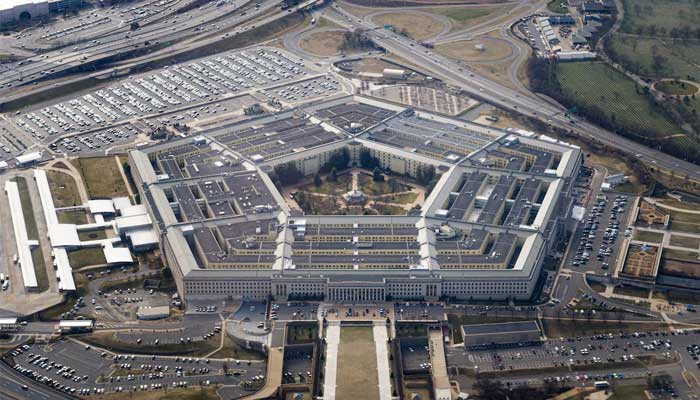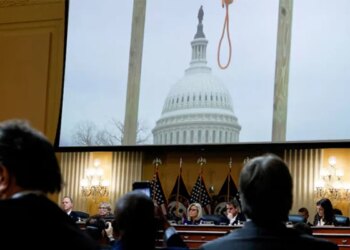Select Language:
The Pentagon appears from above in Washington, D.C., on March 3, 2022.
– Congressional approval is necessary for this change, though Republicans are unlikely to oppose it.
– Critics claim renaming is expensive and serves as an unnecessary distraction.
– This move would leave a personal mark from Trump on the nation’s largest government agency.
On Thursday, a White House official announced that President Donald Trump intends to sign an executive order on Friday to rebrand the Department of Defense as the “Department of War.” This action would give Trump a distinctive influence over the country’s most significant government body.
The proposed order would permit Defense Secretary Pete Hegseth, along with the Department of Defense and its subordinate agencies, to use alternative titles like “Secretary of War,” “Department of War,” and “Deputy Secretary of War” in official documents and public messaging, according to a White House fact sheet. It would also direct Hegseth to propose legislative and executive actions necessary for making the renaming permanent.
Since his inauguration in January, Trump has aimed to rename various locations and institutions, including the Gulf of Mexico, and to restore the original names of military bases that were changed following racial justice protests.
While name changes for departments are uncommon and typically require congressional approval, Trump’s narrow Republican majorities in both chambers have left congressional leaders with little motivation to oppose his initiatives. Historically, the Department of Defense was known as the War Department until 1949 when Congress unified the Army, Navy, and Air Force in the aftermath of World War II. The name change aimed partly to indicate that, in the nuclear era, the focus was on preventing wars.
Reverting the department’s name again would be costly and involve updating signage and stationery used not just at the Pentagon but across military installations worldwide. For example, a previous effort by President Joe Biden to rename nine bases honoring Confederate figures was projected to cost around $39 million. That effort was halted earlier this year by Hegseth.
The Trump administration’s effort to cut Pentagon costs, managed by the Department of Government Efficiency, has been focused on reducing expenditures. Democratic Senator Tammy Duckworth, a military veteran and member of the Senate Armed Services Committee, questioned this approach, stating, “Why not allocate these funds to support military families or to employ diplomats who can help prevent conflicts before they begin?” She added, “Trump seems more interested in using our military for political gains than strengthening national security or supporting our servicemembers and their families.”
Many critics believe the proposed name change is not only expensive but also an unnecessary distraction for the Pentagon. Hegseth argues that the change is “about the warrior ethos, not just words.”
This year, Republican Congressman James Comer, Chair of the House Oversight Committee and a close ally of Trump, introduced legislation to simplify the process for presidents to reorganize and rename agencies. Trump has voiced support, stating last month, “We’re just going to do it. Congress will probably back us if necessary. Defense should be proactive, not just defensive.”
Trump also speculated in June that the original name change was motivated by political correctness. For some within his administration, the idea of renaming the department harks back further—during Trump’s first term, FBI Director Kash Patel, who briefly served at the Pentagon, signed his emails as “Chief of Staff to the Secretary of Defense & the War Department.” Patel told Reuters in 2021 that he saw this as “a tribute to the history and heritage of the Department of Defense.”







